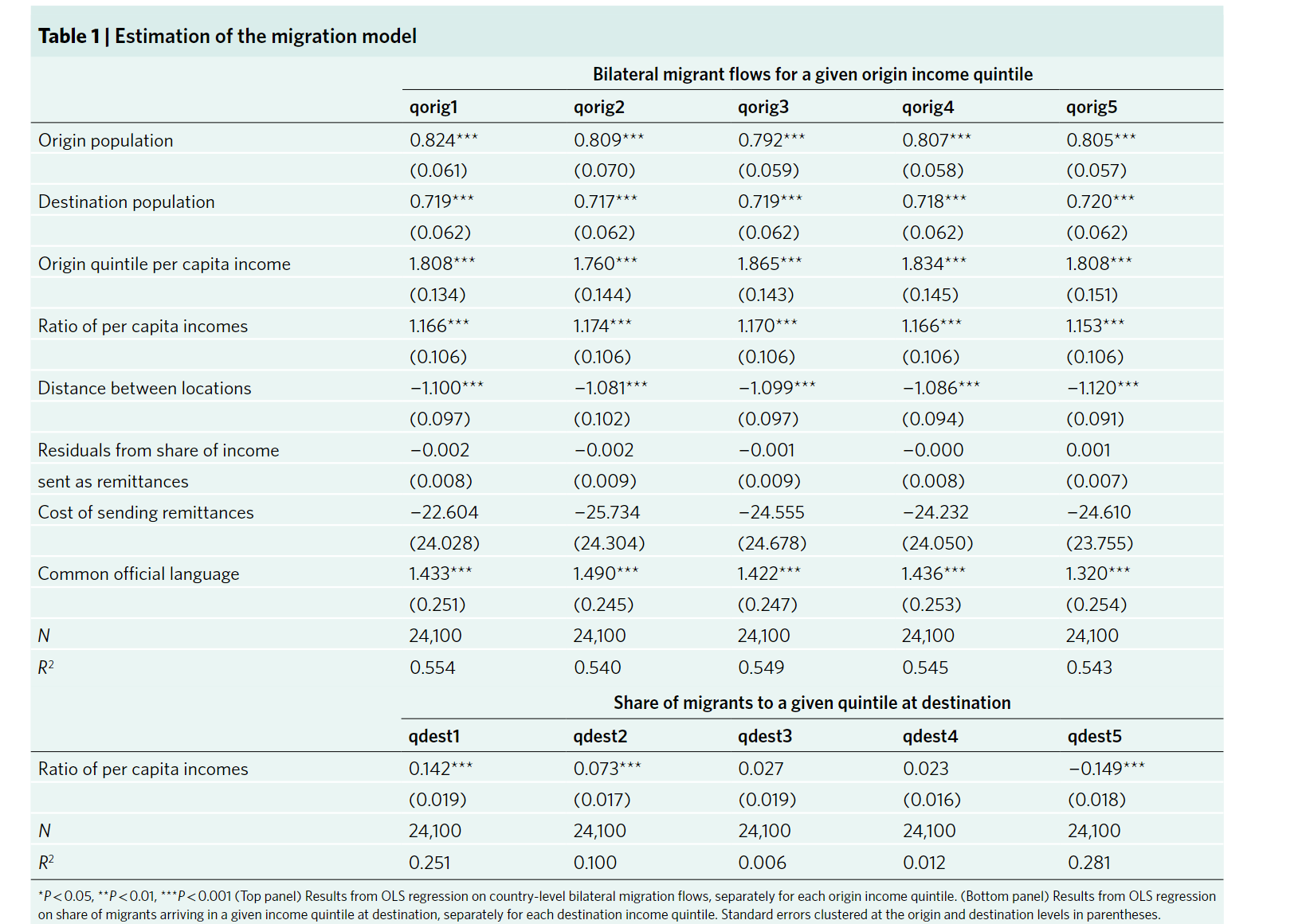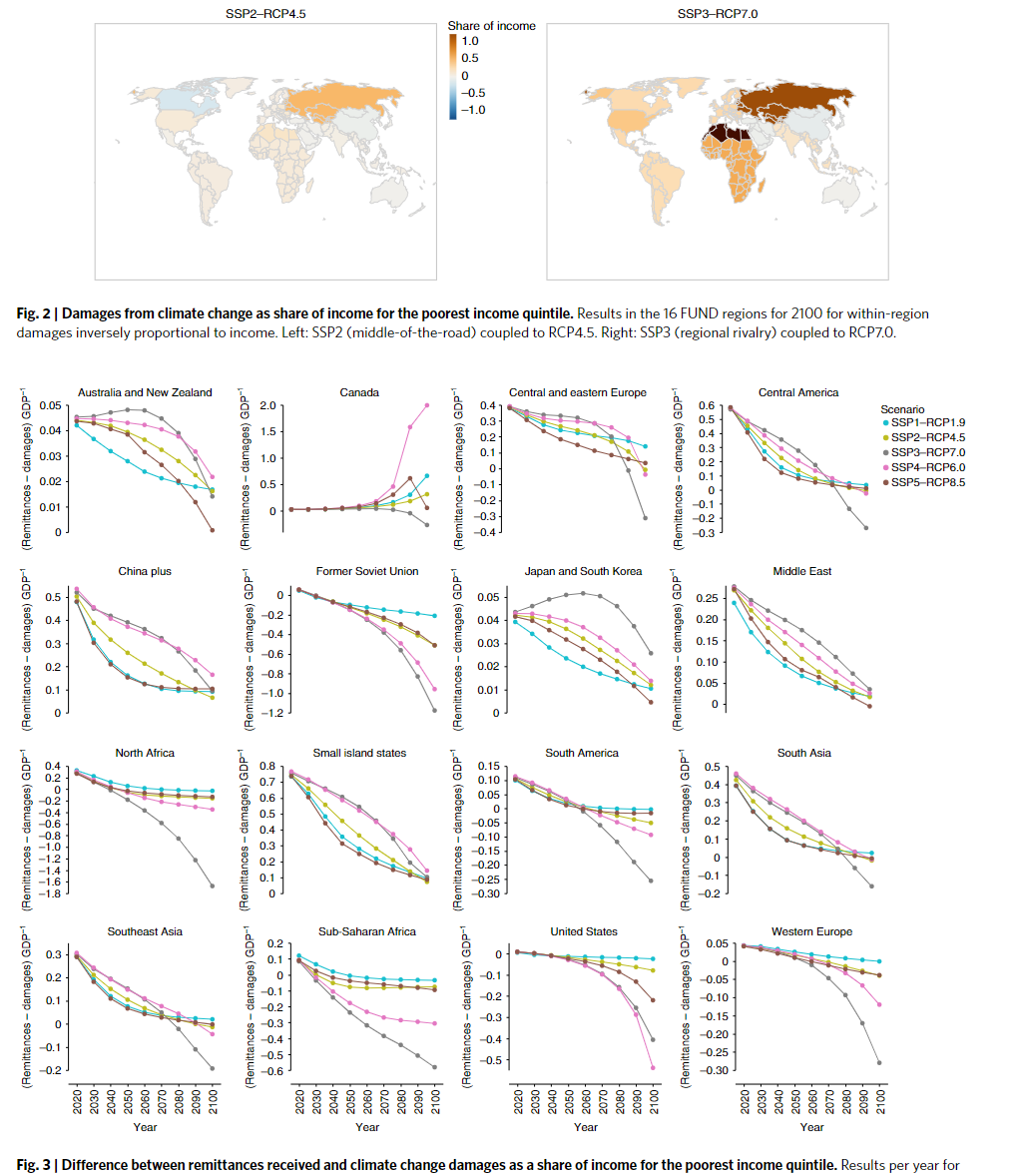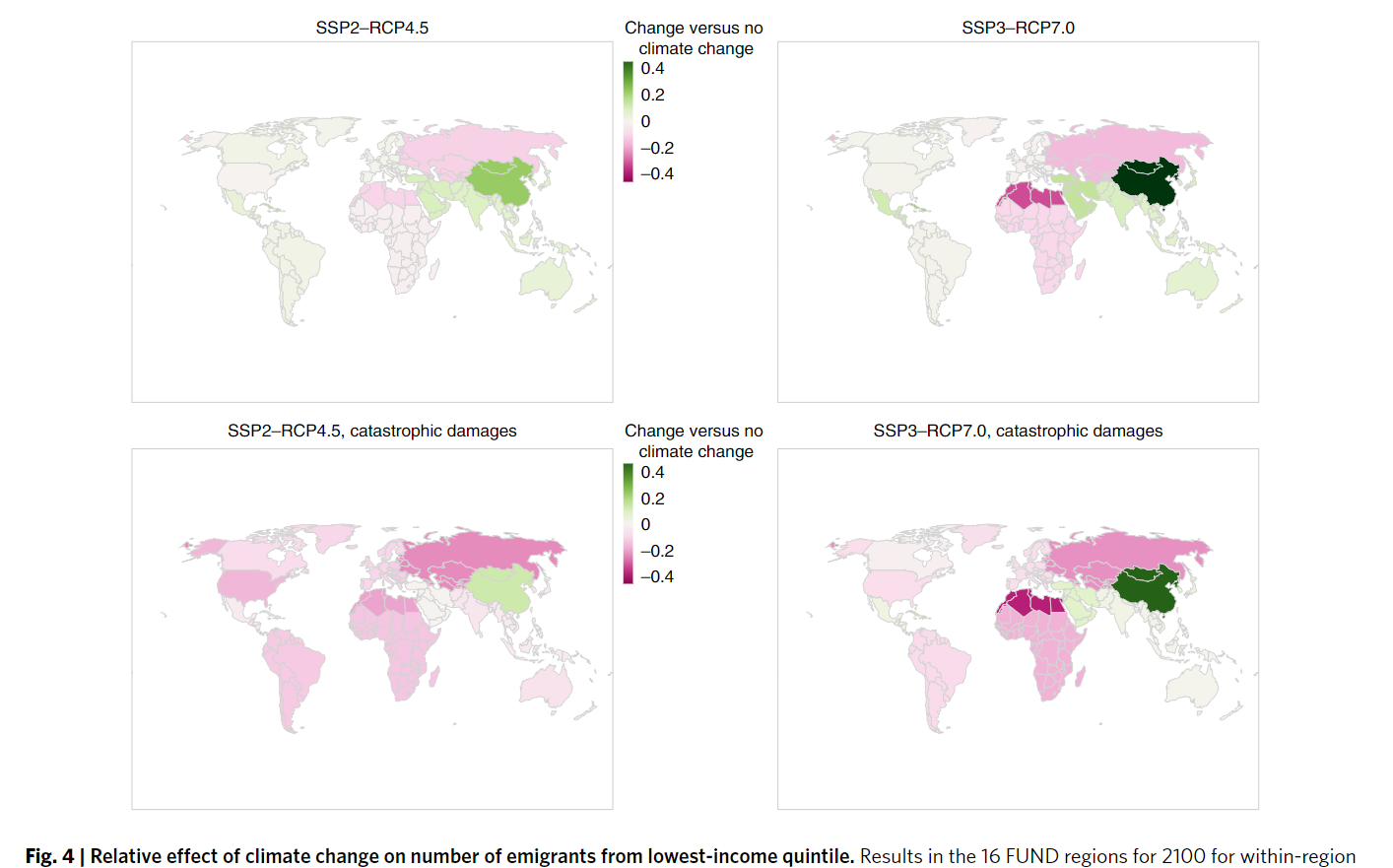Objective:
- Provide a quantitative, global analysis of international immobility due to resource deprivation caused by climate change
Case:
Methodology:
- Population flow:
- gravity mode: OLS
- Robustness: second dataset, reverse causality, shared border
- IAM
Data Source
- Migrant: OECD and World Bank
- Future projection: SSP
- Income and education: OECD
Findings:
- Migrants tend to end up in lower income quintiles when the destination is a developed region and in higher income quintiles when the destination is a developing region
- Most migrants tend to come from richer income levels at origin

- Poorest populations experience higher damages from climate change
- Resources loss through damages are no longer compensated by gains from remittances

- The resources that are available or not to migrate dominate the pull to move towards richer regions
- In most places, resources decrease with climate change for the poorest populations
- Marginal effect of emissions on social welfare (social cost of carbon) are strongly depends on income elascticity of damages


Coding Reference:




